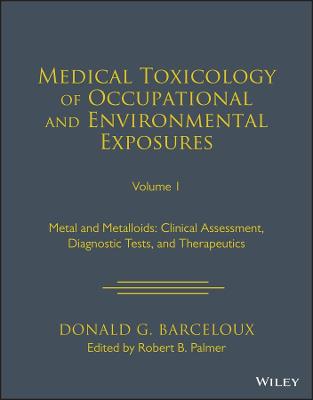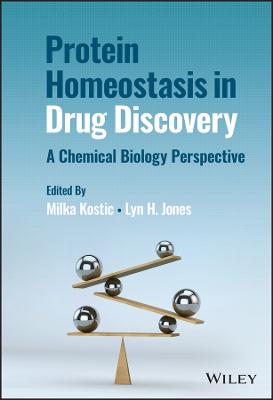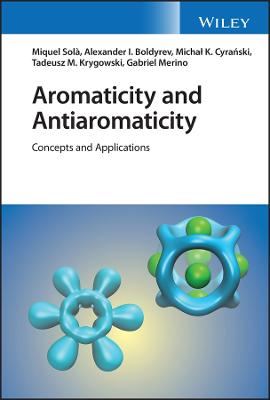Organic Chemistry as a Second Language
 -10%
portes grátis
-10%
portes grátis
Organic Chemistry as a Second Language
Second Semester Topics
Klein, David R.
John Wiley & Sons Inc
09/2024
576
Mole
Inglês
9781119837053
15 a 20 dias
Descrição não disponível.
CHAPTER 1 AROMATICITY 1
1.1 Introduction to Aromatic Compounds 1
1.2 Nomenclature of Aromatic Compounds 2
1.3 Criteria for Aromaticity 6
1.4 Lone Pairs 9
End-of-Chapter Problems 11
CHAPTER 2 IR SPECTROSCOPY 14
2.1 Vibrational Excitation 14
2.2 IR Spectra 16
2.3 Wavenumber 16
2.4 Signal Intensity 21
2.5 Signal Shape 22
2.6 Analyzing an IR Spectrum 29
End-of-Chapter Problems 36
CHAPTER 3 NMR SPECTROSCOPY 39
3.1 Chemical Equivalence 39
3.2 Chemical Shift (Benchmark Values) 42
3.3 Integration 47
3.4 Multiplicity 50
3.5 Pattern Recognition 52
3.6 Complex Splitting 54
3.7 No Splitting 55
3.8 Hydrogen Deficiency Index (Degrees of Unsaturation) 56
3.9 Analyzing a Proton NMR Spectrum 59
3.10 13C NMR Spectroscopy 63
End-of-Chapter Problems 65
CHAPTER 4 ELECTROPHILIC AROMATIC SUBSTITUTION 78
4.1 Halogenation and the Role of Lewis Acids 79
4.2 Nitration 83
4.3 Friedel-Crafts Alkylation and Acylation 85
4.4 Sulfonation 92
4.5 Activation and Deactivation 96
4.6 Directing Effects 98
4.7 Identifying Activators and Deactivators 107
4.8 Predicting and Exploiting Steric Effects 117
4.9 Synthesis Strategies 124
End-of-Chapter Problems 129
CHAPTER 5 NUCLEOPHILIC AROMATIC SUBSTITUTION 134
5.1 Criteria for Nucleophilic Aromatic Substitution 134
5.2 SNAr Mechanism 136
5.3 Elimination-Addition 142
5.4 Mechanism Strategies 148
End-of-Chapter Problems 151
CHAPTER 6 KETONES AND ALDEHYDES 154
6.1 Preparation of Ketones and Aldehydes 154
6.2 Stability and Reactivity of C=O Bonds 157
6.3 H-Nucleophiles 159
6.4 O-Nucleophiles 164
6.5 S-Nucleophiles 174
6.6 N-Nucleophiles 176
6.7 C-Nucleophiles 184
6.8 Exceptions to the Rule 193
6.9 How to Approach Synthesis Problems 197
End-of-Chapter Problems 203
CHAPTER 7 CARBOXYLIC ACID DERIVATIVES 207
7.1 Reactivity of Carboxylic Acid Derivatives 207
7.2 General Rules 208
7.3 Acid Halides 212
7.4 Acid Anhydrides 220
7.5 Esters 222
7.6 Amides and Nitriles 231
7.7 Synthesis Problems 240
End-of-Chapter Problems 247
CHAPTER 8 ENOLS AND ENOLATES 253
8.1 Alpha Protons 253
8.2 Keto-Enol Tautomerism 255
8.3 Reactions Involving Enols 259
8.4 Making Enolates 262
8.5 Haloform Reaction 265
8.6 Alkylation of Enolates 268
8.7 Aldol Reactions 272
8.8 Claisen Condensation 278
8.9 Decarboxylation 285
8.10 Michael Reactions 292
End-of-Chapter Problems 299
CHAPTER 9 AMINES 303
9.1 Nucleophilicity and Basicity of Amines 303
9.2 Preparation of Amines Through SN2 Reactions 305
9.3 Preparation of Amines Through Reductive Amination 308
9.4 Acylation of Amines 313
9.5 Reactions of Amines with Nitrous Acid 316
9.6 Aromatic Diazonium Salts 319
End-of-Chapter Problems 322
CHAPTER 10 DIELS-ALDER REACTIONS 325
10.1 Introduction and Mechanism 325
10.2 The Dienophile 328
10.3 The Diene 329
10.4 Other Pericyclic Reactions 335
End-of-Chapter Problems 336
Detailed Solutions S-1
Index I-1
1.1 Introduction to Aromatic Compounds 1
1.2 Nomenclature of Aromatic Compounds 2
1.3 Criteria for Aromaticity 6
1.4 Lone Pairs 9
End-of-Chapter Problems 11
CHAPTER 2 IR SPECTROSCOPY 14
2.1 Vibrational Excitation 14
2.2 IR Spectra 16
2.3 Wavenumber 16
2.4 Signal Intensity 21
2.5 Signal Shape 22
2.6 Analyzing an IR Spectrum 29
End-of-Chapter Problems 36
CHAPTER 3 NMR SPECTROSCOPY 39
3.1 Chemical Equivalence 39
3.2 Chemical Shift (Benchmark Values) 42
3.3 Integration 47
3.4 Multiplicity 50
3.5 Pattern Recognition 52
3.6 Complex Splitting 54
3.7 No Splitting 55
3.8 Hydrogen Deficiency Index (Degrees of Unsaturation) 56
3.9 Analyzing a Proton NMR Spectrum 59
3.10 13C NMR Spectroscopy 63
End-of-Chapter Problems 65
CHAPTER 4 ELECTROPHILIC AROMATIC SUBSTITUTION 78
4.1 Halogenation and the Role of Lewis Acids 79
4.2 Nitration 83
4.3 Friedel-Crafts Alkylation and Acylation 85
4.4 Sulfonation 92
4.5 Activation and Deactivation 96
4.6 Directing Effects 98
4.7 Identifying Activators and Deactivators 107
4.8 Predicting and Exploiting Steric Effects 117
4.9 Synthesis Strategies 124
End-of-Chapter Problems 129
CHAPTER 5 NUCLEOPHILIC AROMATIC SUBSTITUTION 134
5.1 Criteria for Nucleophilic Aromatic Substitution 134
5.2 SNAr Mechanism 136
5.3 Elimination-Addition 142
5.4 Mechanism Strategies 148
End-of-Chapter Problems 151
CHAPTER 6 KETONES AND ALDEHYDES 154
6.1 Preparation of Ketones and Aldehydes 154
6.2 Stability and Reactivity of C=O Bonds 157
6.3 H-Nucleophiles 159
6.4 O-Nucleophiles 164
6.5 S-Nucleophiles 174
6.6 N-Nucleophiles 176
6.7 C-Nucleophiles 184
6.8 Exceptions to the Rule 193
6.9 How to Approach Synthesis Problems 197
End-of-Chapter Problems 203
CHAPTER 7 CARBOXYLIC ACID DERIVATIVES 207
7.1 Reactivity of Carboxylic Acid Derivatives 207
7.2 General Rules 208
7.3 Acid Halides 212
7.4 Acid Anhydrides 220
7.5 Esters 222
7.6 Amides and Nitriles 231
7.7 Synthesis Problems 240
End-of-Chapter Problems 247
CHAPTER 8 ENOLS AND ENOLATES 253
8.1 Alpha Protons 253
8.2 Keto-Enol Tautomerism 255
8.3 Reactions Involving Enols 259
8.4 Making Enolates 262
8.5 Haloform Reaction 265
8.6 Alkylation of Enolates 268
8.7 Aldol Reactions 272
8.8 Claisen Condensation 278
8.9 Decarboxylation 285
8.10 Michael Reactions 292
End-of-Chapter Problems 299
CHAPTER 9 AMINES 303
9.1 Nucleophilicity and Basicity of Amines 303
9.2 Preparation of Amines Through SN2 Reactions 305
9.3 Preparation of Amines Through Reductive Amination 308
9.4 Acylation of Amines 313
9.5 Reactions of Amines with Nitrous Acid 316
9.6 Aromatic Diazonium Salts 319
End-of-Chapter Problems 322
CHAPTER 10 DIELS-ALDER REACTIONS 325
10.1 Introduction and Mechanism 325
10.2 The Dienophile 328
10.3 The Diene 329
10.4 Other Pericyclic Reactions 335
End-of-Chapter Problems 336
Detailed Solutions S-1
Index I-1
Este título pertence ao(s) assunto(s) indicados(s). Para ver outros títulos clique no assunto desejado.
Organic chemistry textbook; organic chemistry text; organic chemistry text; two-semester organic chemistry textbook; two-semester organic chemistry text; organic chemistry book; organic chemistry reference; organic chemistry review; Organic chemistry as a second language; OC2L; Organic chemistry help; Org Chem help; Organic Chemistry help with problems; Org Chem help with problems; Organic Chemistry problem-solving; Org Chem problem-solving; Organic Chemistry problem-solving help; Organic Chemistry 1st semester help; Klein; David Klein; OpenStax Organic Chemistry; ALEKS; ALEKS 360; Aktiv; McMurry Organic Chemistry; Wade Organic Chemistry; Bruice Organic Chemistry; Carey Organic Chemistry; Brown Organic Chemistry; Jones Organic Chemistry; Karty Organic Chemistry; Loudon Organic Chemistry; Forsey Organic Chemistry; Ogilvie Organic Chemistry; Vollhardt Organic Chemistry; Hart Organic Chemistry; Bruice Essentials of Organic Chemistry; McMurry Fundamentals of Organic Chemistry; MCAT prep
CHAPTER 1 AROMATICITY 1
1.1 Introduction to Aromatic Compounds 1
1.2 Nomenclature of Aromatic Compounds 2
1.3 Criteria for Aromaticity 6
1.4 Lone Pairs 9
End-of-Chapter Problems 11
CHAPTER 2 IR SPECTROSCOPY 14
2.1 Vibrational Excitation 14
2.2 IR Spectra 16
2.3 Wavenumber 16
2.4 Signal Intensity 21
2.5 Signal Shape 22
2.6 Analyzing an IR Spectrum 29
End-of-Chapter Problems 36
CHAPTER 3 NMR SPECTROSCOPY 39
3.1 Chemical Equivalence 39
3.2 Chemical Shift (Benchmark Values) 42
3.3 Integration 47
3.4 Multiplicity 50
3.5 Pattern Recognition 52
3.6 Complex Splitting 54
3.7 No Splitting 55
3.8 Hydrogen Deficiency Index (Degrees of Unsaturation) 56
3.9 Analyzing a Proton NMR Spectrum 59
3.10 13C NMR Spectroscopy 63
End-of-Chapter Problems 65
CHAPTER 4 ELECTROPHILIC AROMATIC SUBSTITUTION 78
4.1 Halogenation and the Role of Lewis Acids 79
4.2 Nitration 83
4.3 Friedel-Crafts Alkylation and Acylation 85
4.4 Sulfonation 92
4.5 Activation and Deactivation 96
4.6 Directing Effects 98
4.7 Identifying Activators and Deactivators 107
4.8 Predicting and Exploiting Steric Effects 117
4.9 Synthesis Strategies 124
End-of-Chapter Problems 129
CHAPTER 5 NUCLEOPHILIC AROMATIC SUBSTITUTION 134
5.1 Criteria for Nucleophilic Aromatic Substitution 134
5.2 SNAr Mechanism 136
5.3 Elimination-Addition 142
5.4 Mechanism Strategies 148
End-of-Chapter Problems 151
CHAPTER 6 KETONES AND ALDEHYDES 154
6.1 Preparation of Ketones and Aldehydes 154
6.2 Stability and Reactivity of C=O Bonds 157
6.3 H-Nucleophiles 159
6.4 O-Nucleophiles 164
6.5 S-Nucleophiles 174
6.6 N-Nucleophiles 176
6.7 C-Nucleophiles 184
6.8 Exceptions to the Rule 193
6.9 How to Approach Synthesis Problems 197
End-of-Chapter Problems 203
CHAPTER 7 CARBOXYLIC ACID DERIVATIVES 207
7.1 Reactivity of Carboxylic Acid Derivatives 207
7.2 General Rules 208
7.3 Acid Halides 212
7.4 Acid Anhydrides 220
7.5 Esters 222
7.6 Amides and Nitriles 231
7.7 Synthesis Problems 240
End-of-Chapter Problems 247
CHAPTER 8 ENOLS AND ENOLATES 253
8.1 Alpha Protons 253
8.2 Keto-Enol Tautomerism 255
8.3 Reactions Involving Enols 259
8.4 Making Enolates 262
8.5 Haloform Reaction 265
8.6 Alkylation of Enolates 268
8.7 Aldol Reactions 272
8.8 Claisen Condensation 278
8.9 Decarboxylation 285
8.10 Michael Reactions 292
End-of-Chapter Problems 299
CHAPTER 9 AMINES 303
9.1 Nucleophilicity and Basicity of Amines 303
9.2 Preparation of Amines Through SN2 Reactions 305
9.3 Preparation of Amines Through Reductive Amination 308
9.4 Acylation of Amines 313
9.5 Reactions of Amines with Nitrous Acid 316
9.6 Aromatic Diazonium Salts 319
End-of-Chapter Problems 322
CHAPTER 10 DIELS-ALDER REACTIONS 325
10.1 Introduction and Mechanism 325
10.2 The Dienophile 328
10.3 The Diene 329
10.4 Other Pericyclic Reactions 335
End-of-Chapter Problems 336
Detailed Solutions S-1
Index I-1
1.1 Introduction to Aromatic Compounds 1
1.2 Nomenclature of Aromatic Compounds 2
1.3 Criteria for Aromaticity 6
1.4 Lone Pairs 9
End-of-Chapter Problems 11
CHAPTER 2 IR SPECTROSCOPY 14
2.1 Vibrational Excitation 14
2.2 IR Spectra 16
2.3 Wavenumber 16
2.4 Signal Intensity 21
2.5 Signal Shape 22
2.6 Analyzing an IR Spectrum 29
End-of-Chapter Problems 36
CHAPTER 3 NMR SPECTROSCOPY 39
3.1 Chemical Equivalence 39
3.2 Chemical Shift (Benchmark Values) 42
3.3 Integration 47
3.4 Multiplicity 50
3.5 Pattern Recognition 52
3.6 Complex Splitting 54
3.7 No Splitting 55
3.8 Hydrogen Deficiency Index (Degrees of Unsaturation) 56
3.9 Analyzing a Proton NMR Spectrum 59
3.10 13C NMR Spectroscopy 63
End-of-Chapter Problems 65
CHAPTER 4 ELECTROPHILIC AROMATIC SUBSTITUTION 78
4.1 Halogenation and the Role of Lewis Acids 79
4.2 Nitration 83
4.3 Friedel-Crafts Alkylation and Acylation 85
4.4 Sulfonation 92
4.5 Activation and Deactivation 96
4.6 Directing Effects 98
4.7 Identifying Activators and Deactivators 107
4.8 Predicting and Exploiting Steric Effects 117
4.9 Synthesis Strategies 124
End-of-Chapter Problems 129
CHAPTER 5 NUCLEOPHILIC AROMATIC SUBSTITUTION 134
5.1 Criteria for Nucleophilic Aromatic Substitution 134
5.2 SNAr Mechanism 136
5.3 Elimination-Addition 142
5.4 Mechanism Strategies 148
End-of-Chapter Problems 151
CHAPTER 6 KETONES AND ALDEHYDES 154
6.1 Preparation of Ketones and Aldehydes 154
6.2 Stability and Reactivity of C=O Bonds 157
6.3 H-Nucleophiles 159
6.4 O-Nucleophiles 164
6.5 S-Nucleophiles 174
6.6 N-Nucleophiles 176
6.7 C-Nucleophiles 184
6.8 Exceptions to the Rule 193
6.9 How to Approach Synthesis Problems 197
End-of-Chapter Problems 203
CHAPTER 7 CARBOXYLIC ACID DERIVATIVES 207
7.1 Reactivity of Carboxylic Acid Derivatives 207
7.2 General Rules 208
7.3 Acid Halides 212
7.4 Acid Anhydrides 220
7.5 Esters 222
7.6 Amides and Nitriles 231
7.7 Synthesis Problems 240
End-of-Chapter Problems 247
CHAPTER 8 ENOLS AND ENOLATES 253
8.1 Alpha Protons 253
8.2 Keto-Enol Tautomerism 255
8.3 Reactions Involving Enols 259
8.4 Making Enolates 262
8.5 Haloform Reaction 265
8.6 Alkylation of Enolates 268
8.7 Aldol Reactions 272
8.8 Claisen Condensation 278
8.9 Decarboxylation 285
8.10 Michael Reactions 292
End-of-Chapter Problems 299
CHAPTER 9 AMINES 303
9.1 Nucleophilicity and Basicity of Amines 303
9.2 Preparation of Amines Through SN2 Reactions 305
9.3 Preparation of Amines Through Reductive Amination 308
9.4 Acylation of Amines 313
9.5 Reactions of Amines with Nitrous Acid 316
9.6 Aromatic Diazonium Salts 319
End-of-Chapter Problems 322
CHAPTER 10 DIELS-ALDER REACTIONS 325
10.1 Introduction and Mechanism 325
10.2 The Dienophile 328
10.3 The Diene 329
10.4 Other Pericyclic Reactions 335
End-of-Chapter Problems 336
Detailed Solutions S-1
Index I-1
Este título pertence ao(s) assunto(s) indicados(s). Para ver outros títulos clique no assunto desejado.
Organic chemistry textbook; organic chemistry text; organic chemistry text; two-semester organic chemistry textbook; two-semester organic chemistry text; organic chemistry book; organic chemistry reference; organic chemistry review; Organic chemistry as a second language; OC2L; Organic chemistry help; Org Chem help; Organic Chemistry help with problems; Org Chem help with problems; Organic Chemistry problem-solving; Org Chem problem-solving; Organic Chemistry problem-solving help; Organic Chemistry 1st semester help; Klein; David Klein; OpenStax Organic Chemistry; ALEKS; ALEKS 360; Aktiv; McMurry Organic Chemistry; Wade Organic Chemistry; Bruice Organic Chemistry; Carey Organic Chemistry; Brown Organic Chemistry; Jones Organic Chemistry; Karty Organic Chemistry; Loudon Organic Chemistry; Forsey Organic Chemistry; Ogilvie Organic Chemistry; Vollhardt Organic Chemistry; Hart Organic Chemistry; Bruice Essentials of Organic Chemistry; McMurry Fundamentals of Organic Chemistry; MCAT prep







